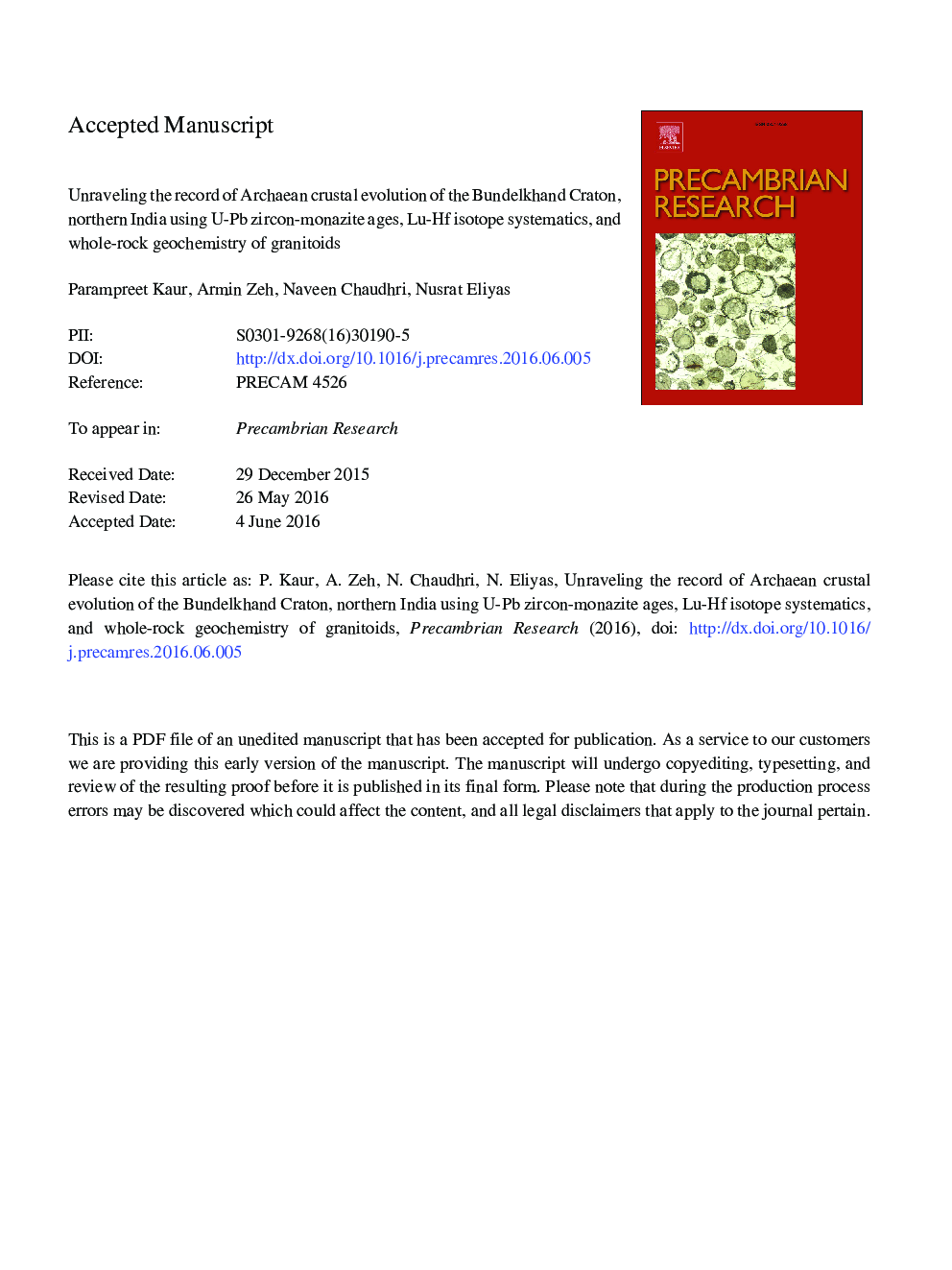| Article ID | Journal | Published Year | Pages | File Type |
|---|---|---|---|---|
| 6442137 | Precambrian Research | 2016 | 74 Pages |
Abstract
Hf-isotope and whole-rock geochemical data of the TTGs suggest a complex process of crust formation and stabilisation during the Palaeoarchaean, mainly by the reworking of older mafic and felsic crust between 3.55 and 3.20 Ga. The CHUR parallel array for the TTGs may indicate that these rocks were formed by partial melting of an oceanic crust that was derived from chondritic mantle sources, shortly before formation of TTG. This interpretation is inconsistent with Hf-isotope data from worldwide sources, which provide evidence for a successive mantle depletion since at least 4.0 Ga, resulting in εHft of about +5.0 at 3.0 Ga. Intense melting of the heterogeneous TTG crust during the Neoarchaean resulted in the coeval formation of granodioritic gneisses and voluminous granites, and subordinate hybrid granites with a minor contribution of melts from an enriched mantle source, affected by subduction-zone processes prior to 2.55 Ga.
Related Topics
Physical Sciences and Engineering
Earth and Planetary Sciences
Geochemistry and Petrology
Authors
Parampreet Kaur, Armin Zeh, Naveen Chaudhri, Nusrat Eliyas,
